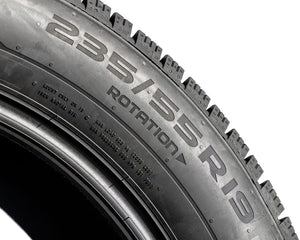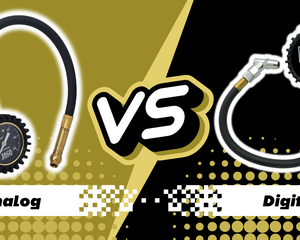
When it comes to maintaining the safety and performance of your vehicle, the condition of your tires is one of the most important factors to consider. One key aspect of tire condition is the tire tread depth, which is a measure of the amount of rubber on the tire that comes into contact with the road. In this blog post, we'll explain what tire tread depth is, how tire wear affects tire performance, how-to measure tire tread wear, and when you should replace your tires.
What is tire tread depth?
Tire tread depth is a measure of the amount of rubber on the tire that comes into contact with the road. This is important because it determines the tire's ability to grip the road and provide traction, especially in wet or slippery conditions. When a tire's tread depth is too low, the tire's performance can be compromised, leading to reduced traction and increased risk of hydroplaning or skidding. The minimum legal tire tread depth for passenger vehicles in the United States is 2/32 of an inch.

How does tire wear affect tire performance?
As tires are used, the tread on the tire gradually wears down. This can be caused by a variety of factors, including driving habits, road conditions, and the type of vehicle you drive. For example, driving on rough roads or under-inflated tires can cause the tire tread to wear down faster. As the tire tread wears down, the tire's ability to grip the road and provide traction is reduced. This can lead to poor handling and braking, especially in wet or slippery conditions. It can also increase the risk of a tire blowout or failure, which can be dangerous at high speeds.

How do I measure tire tread depth?
There are several ways to measure tire tread depth.
Using a Tire Tread Depth Gauge
One simple method is to use a tire tread depth gauge, which is a tool specifically designed for this purpose. To use a tire tread depth gauge, follow these steps:
- Place the gauge on the tire tread at the center of the tire, making sure that the probe is perpendicular to the tire and fully seated in the tread grooves.
- Press the gauge firmly against the tire to ensure an accurate reading.
- Read the tire tread depth on the gauge. Most tire tread depth gauges have a digital display or a dial with markings in millimeters or inches.

The Penny Trick
Another way to measure tire tread depth is to use a penny. To do this, follow these steps:
- Place a penny in the tire tread with Lincoln's head facing down and perpendicular to the tire.
- If the top of Lincoln's head is covered by the tire tread, the tire tread depth is at or above the minimum safe level. If the top of Lincoln's head is visible, the tire tread depth is below the minimum safe level and the tires should be replaced.

It's important to note that the penny test is only a rough estimate of tire tread depth, and it's recommended to use a tire tread depth gauge for a more accurate measurement. Additionally, tire wear can vary across the tire, so it's important to check the tread depth at multiple points around the tire to get a complete picture of the tire's condition.
When do my tires need to be replaced?
It's important to regularly check the tread depth of your tires to ensure that they are in good condition and providing adequate traction. Most tires have wear bars, which are raised bars in the tread that indicate when the tire tread depth is at or below the minimum safe level. If the tread is level with the wear bars, it's time to replace your tires.
In addition to checking the tread depth, you should also inspect your tires for other signs of wear, such as cracks, bulges, or uneven wear. If you notice any of these signs, it's important to have your tires inspected by a professional to determine if they need to be replaced.

Final Thoughts
In conclusion, tire tread depth is an important factor in determining the performance and safety of your tires. As the tread wears down, the tire's ability to grip the road and provide traction is reduced. It's important to regularly check the tread depth of your tires and replace them when necessary to ensure that you're getting the best performance and safety from your vehicle. We recommend regularly using an accurate tire tread depth gauge for optimal tire performance and longevity. Regular tire maintenance can also help extend the lifespan of your tires and save you money in the long run. So, be sure to check your tires regularly and take care of them to keep your vehicle running smoothly and safely on the road.




